Repainting metal surfaces (How to prepare & choose the best paints)
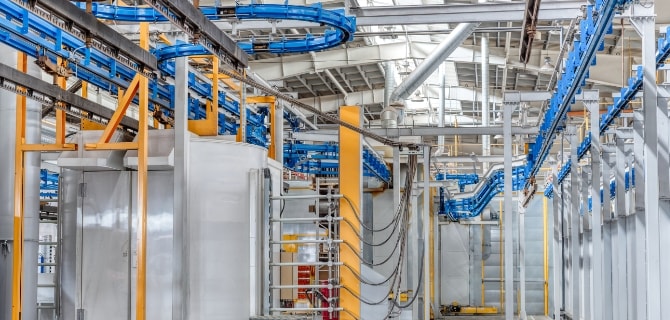
Repainting metal surfaces has two main purposes. First, it protects the metal against rusting, making it more durable and prolonging its life. Second, it makes the surface look appealing. While metal is known for its strength, it will degrade over time, as it is prone to rust and corrosion. Caught earlier enough, the metal can be repaired and repainted, thus greatly expanding its usability, and that’s why it’s important to partner with a trusted painting contractor that has the know-how to handle all types of metal painting projects.
Metal structures are quite strong, stable and are known for their longevity. Furthermore, they are completely insect resistant. Metal panels can be cut or bended into just about any shape, which makes it a versatile material. But in order for the structures to last and look good, a quality painting contractor that knows all about metal prep for paint needs to be called in to do the job.
To help you become more informed about repainting metal surfaces, we’ve provided the following guidelines, tips and best practices.
Check out the following to figure out which is best for you:
- Common signs it’s time to repaint your metal surfaces
- Long lasting metal surface painting
- Painting the different type metal surfaces
- Common items for commercial metal surfaces painting
- Painting commercial metal building exterior
- How to prepare metal surfaces for repainting
- Tips how to repaint commercial metal building
- Choose the right type paint for your metal surfaces
- Experienced metal surfaces painting contractor in the Chicago area
Common signs it’s time to repaint your metal surfaces
When is it time for repainting metal surfaces? It can be difficult to know, but if you follow these guidelines, you can reduce the risk of your metal structures failing you.
These signs will tell you it’s time to revamp the look of your business:
Patches of rust or corrosion on the surface
Perhaps the most common sign that a metal structure is in need of attention is rust. Iron, steel and other types of metals commonly used in buildings will rust if they aren’t protected. Rust is the result of oxidation caused by moisture coming in contact with the metal and creating a chemical reaction that breaks down the metal. Allowed to go on for too long, the rust will eat through the metal.
And while only iron and steel alloys will rust, other metals are prone to damage, too. For example, Copper, titanium, galvanized steel and aluminum will either tarnish, stain or corrode. These metals can also be protected by a quality paint job.
Fading
Metal will fade when exposed to the elements, such as the sun, wind and precipitation. This happens more frequently on surfaces facing the south and west, but can also be an issue on east-facing walls that get no shade or shelter during sunlight hours or during a storm. High-quality paints use ingredients that help deflect the damaging utra-violet light and other exposure to the elements that makes pigment fade.
Blistering
When moisture gets between the paint and the surface, it can create pockets that resemble blisters. When this occurs, the paint is no longer adhering to the surface and will eventually peel or chip off. Surfaces that are in constant humid and warm conditions are at the greatest risk for blistering.
Poor paint jobs are also at risk for blistering. For example, when a solvent-based paint is sprayed onto a surface that is too warm, the solvent will blister. Also, painters who go too thick on their coats will create perfect conditions for blistering. Finally, when the paint film is porous, which occurs with low-quality paint, the paint will dry and be susceptible to blistering later because moisture penetrates porous surfaces quite easily.
Cracking
Have you ever seen a painted surface that looks like alligator skin? That’s called cracking and it’s the result of using poor quality paint. Cracked paint will eventually split and flake off the surface. You can usually spot the beginnings of cracking as hairline cracks, which will expand and become more visible. By using quality paints in the right conditions (air temperature and humidity levels), you can prevent cracking.
Adhesion failure
Paint only lasts if it adheres to the metal surface. Generally, non-adhesion occurs when the painter did not prep the metal correctly, was painted in the wrong conditions or the painter used poor quality paint. It’s extremely important that all metal surfaces be cleaned and abraded before they are primed and painted.
Chalking
Another event that is often associated with fading is something called chalking, which is when the saturation of the color on the surface begins to wane and create a white coating that looks like chalk. While quality paints prevent chalking, no paint is meant to last forever and will eventually show signs of aging, including chalking. You can rub your hand against a chalking surface and you will be left with a white substance on your hand. While this is less noticeable on light colored surfaces, it still needs to be remedied, as the paint is no longer fully protecting the metal surface.
Dirt
Dirt might seem like a harmless distraction that simply needs to be cleaned off the surface, but some dirt and grime contains corrosive elements that can actually damage the paint and eventually damage the metal. When dirt and grime are allowed to settle into the paint film and become embedded, the situation calls for a painting professional who can assess the severity of the damage and take measures to remedy the issue, which could involve repairs before repainting.
The best painting contractors know how important it is to prep metal surfaces prior to painting. Only partner with a contractor that goes through all the proper preparation steps and uses quality paints.
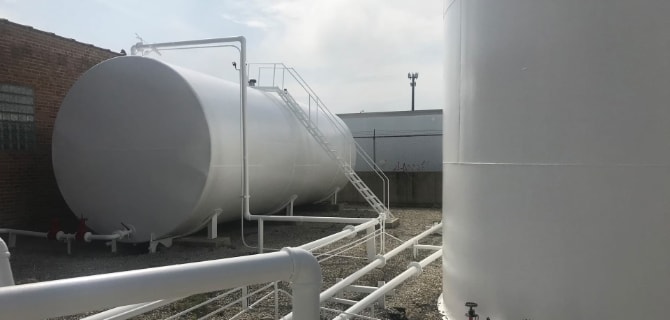
Long lasting metal surface painting
Metal surface painting is proven to prolong the life of the surface. With the right metal surface preparation and through priming metal for paint, the stage is set for quality results. Keeping air and moisture off the metal is what a quality painting job will do, which is why it pays to work with a painting contractor with plenty of experience on metal surfaces.
Metal surface preparation
No matter what surface you’re painting, it will require some type of preparation. It’s especially true with metal, which needs to be clean and completely dry prior to receiving a coat of primer or paint.
Quality painting contractors know they need to get rid of rust, stains or any type of corrosion during the preparation phase of the project before advancing.
Priming (where needed)
Most bare metal is primed before it receives a topcoat. If you’re painting a metal surface with a drastically different color, using primer will also be necessary so the new color looks good. Primer also offers superior adhesion strength for the topcoat.
Premium metal painting products
Given that the bulk of the cost of a painting project is wrapped up in labor, it never makes sense to go cheap on the paints. Using low-quality paint can actually add to the cost of a project because it doesn’t last and you’ll have to pay to have the surfaces repainted in a short amount of time.
Premium metal painting products not only look better than budget paints, they also last longer – much longer, because the manufacturer uses ingredients that protect against the elements, heat, moisture, mold and mildew.
Proper metal painting techniques
Quality painting contractors will use the latest spraying technology to apply paint to metal. They know all the proper painting techniques related to this technology and they keep their equipment in top condition so the finished product looks professional and will completely protect the metal surfaces for years to come.
Painting the different type metal surfaces
Most metals used in construction arrive at the job site with a protective coating, but these coatings aren’t meant to last. Whether it’s metal types used for a door frame or a ceiling joist, pipes in the walls or metal for a staircase, it all needs to be properly painted so it will be protected from moisture.
Quality painters know how to handle each type of metal, which in most structures is one of the following:
- Cast Iron
- Steel
- Aluminum
- Galvanized metal
- Wrought iron
Stainless steel is a popular metal because it actually forms an oxide layer that protects it, but other types require metal painting. For example, did you know that iron-based metals, which do not produce a protective layer, will corrode and weaken over time? Prepping metals that are prone to corrosion and then priming and painting them will ensure that they last for a long time.
The most common types of metals
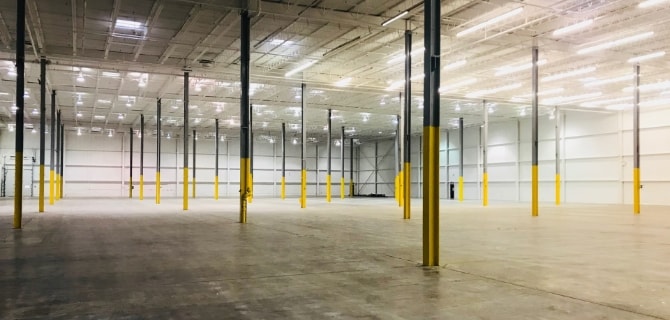
Galvanized metal painting
The most common place for galvanized metal is in gutters and roofs. While this type of metal is coated with zinc to help combat rust, it still requires paint to fully protect it. An acrylic primer is usually the first coat, as it doesn’t have a bad reaction with zinc like an oil-based primer will.
The best painting contractors know to use a direct-to-metal (DTM) painting product on galvanized metal. At Painters Inc., we often use a DTM product from Benjamin Moore, which is a superior brand of paint.
Ferrous (iron-containing) metal painting
Metal that contains iron is called ferrous metal. Ferrous metal rusts exceedingly easily, which means most paint jobs involving this type of metal will require some type of rust treatment in the prep work. The best outcomes involve an oil-based primer, which helps to prevent corrosion, but also acts as a bonding layer that paint will adhere to, which is extremely important to the lifespan of the paint job.
Pre-primed metal painting
With new construction paint projects, some of the metal surfaces will come pre-primed. The rule of thumb is to paint these pre-primed surfaces within a month of them leaving the manufacturer. Waiting longer than a month can be risky, as the primer can become less protective and allow moisture to damage the metal.
Painters that do not heed this advice run the risk of their paint bubbling and/or peeling later. Quality painters know to thoroughly clean pre-primed surfaces of any rust or corrosion before applying a DTM paint.
Factory-baked enamel over metal painting
One of the most durable, long-lasting painting processes is a factory-baked enamel. This is what you find on most garage doors. Quality painters know that this painting process will last far longer than anything they can do. However, in cases where the client insists on a different color and has the door painted, know that it will probably need to be repainted every five to 10 years. Again, a DTM paint is the recommended product for these types of surfaces.
Not sure what types of metal you have in your structure? That’s not uncommon, which is why it’s important to bring in a trusted painting contractor that can identify all the different types of metal surfaces in your building.
At Painters Inc., we begin every project with a thorough inspection followed by a planning phase that accounts for every detail involved in the project. Using the right painting techniques for each type of metal, you’re sure to have all of your surfaces looking great and fully protected for years to come.
Common types of commercial metal surface painting
When a workspace is considered a “high-use” environment, it is almost always constructed using durable materials. Metal certainly qualifies as durable, but that doesn’t mean it needs no protection. In fact, metal receives a great amount of protection from paint, but it requires a different type of technique than other surfaces, such as drywall or cement, wood or stucco. When you hire a professional painting contractor, you can rest assured that your metal surface painting jobs will be completed correctly.
At Painters Inc., the most common metal surfaces we’ve painted include the following:
- Railings, fire escapes and stairways
- Fasades
- Metal fences
- Metal roof
- Metal siding
- Gutters
- Window frames and lintels
- Fire doors
- Catwalks between storage tanks
- Apartment catwalks
- Bollards
- Water towers
- Tanks
- Pipes
- Structural steel
- Interior and exterior columns
This list might not include metal structures in your building, but at Painters Inc., we’ve tackled so many projects that we’re almost sure to have encountered a metal structure similar to what is in your facility. If you have questions, feel free to contact us.
Painting commercial metal building exterior
Metal building painting projects usually involve the client wanting a different look via a new color, or it could be that the old paint is beginning to fail or has failed. Commercial metal building painting professionals can handle any situation, even if rust has begun to take hold on some areas of the metal.
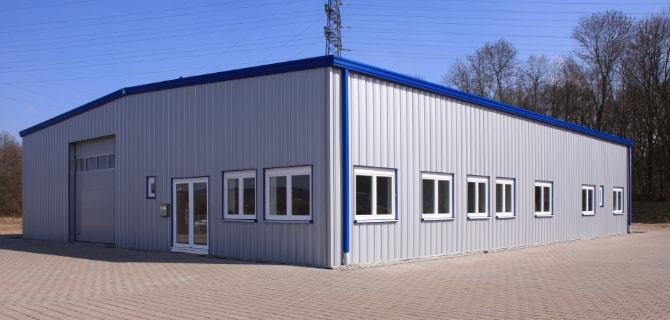
At Painters Inc., we know that the best paint for metal building projects include some of the best names in the paint industry today, including Sherwin-Williams and Benjamin Moore. As a got-to metal building painting contractor, you can count on us to use the right materials and techniques.
Metal roof painting
Metal roof painting is a frequent project for painting contractors, as metal roofs look more aesthetically pleasing when painted, but also get added layers of protection from the paint. This results in curb appeal and longevity, but only if you bring in the right painting contractor that has plenty of experience painting metal roofs.
Top-quality contractors make a thorough assessment of the roof first, looking for imperfections that need to be repaired before painting. Usually, the repairs involve getting rid of peeling paint, fixing small holes and getting rid of corrosion. Should the inspection reveal extensive damage, the go-to option is to call in a professional that specializes in repairing metal roofing. And once the roof is completely repaired, your roofing contractor will make sure it is clean, dry and ready for painting.
The best roof paint for metal roof projects is direct-to-metal (DTM) paint. These are almost always an acrylic-based paint because acrylic adheres exceedingly well to metal roofs. Paint manufacturers use ingredients in their DTM paints that make them durable and able to stand up to the elements, but they also include ingredients that prevent the color from fading.
When you bring in a contractor that has extensive experience painting metal roofs, your project results in a stunning look that will last a long time. Another benefit of using quality paints is that they decrease energy costs, which means you’re not only getting a roof with tons of curb appeal, you’re also saving money.
Aluminum siding painting
Aluminum siding painting projects are a common job for painting contractors, as aluminum siding is quite popular. The best paint for aluminum siding depends on a handful of factors, including how much sun the surfaces receive and how much protection they have from the wind and precipitation.
While aluminum is durable and doesn’t rust, it still requires protection from the elements, as it is not impervious to years of exposure. You’ll notice on aluminum siding that has been around for a while and has not been repainted, it might look chalky in appearance. This occurs when ultraviolet rays from the sun have beat down on the paint for years and years, which causes the paint to break down and give off a white-colored substance. Using the best paint for aluminum will prevent this from happening.
Aluminum is a highly reactive material in its purest form, and aluminum siding comes with the risk of corrosion if not properly protected. Corrosion is a rather foreign concept to those who have only dealt with wood siding, fiber cement siding or vinyl siding. However, when you bring in the right painting contractor, you’ll be in good hands.
The most important thing your contractor needs to know is which paints will adhere properly to aluminum and which paints will provide protection and durability. At Painters Inc., we know which exterior paints should never be applied to siding and which paints are a perfect match.
How to prepare metal surfaces for repainting
One of the most important aspects of taking on a painting project is the prep work that occurs prior to painting. Your contractor should know all the important steps in how to prepare metal for painting. Metal surface preparation, at its easiest, is simply making sure it is free of dirt and grime. Your contractor will also need to know how to prep galvanized metal for paint because most gutter systems (and downspouts) are made with galvanized metal.
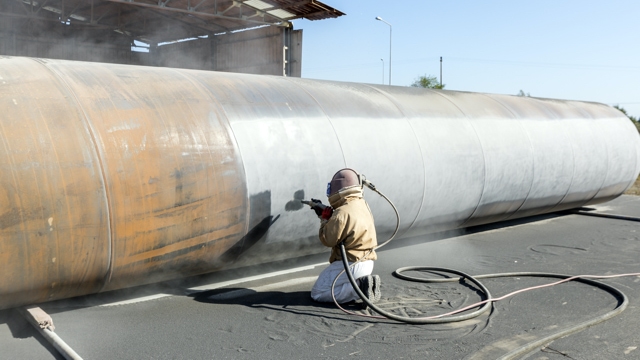
The best contractors know how to approach preparation of the metal, what coatings are most appropriate to use and the specific painting techniques for each type of surface. Some surfaces will be under a different type of strain than other surfaces on the same building. For example, a south-facing metal surface can be expected to take much more abuse from Mother Nature than surfaces facing other directions. Is one surface going to be subjected to more water than others? Your contractor will choose a paint specifically formulated to fight moisture. Sunlight, shade, humidity, wind and debris are all considerations regarding the type of topcoat that will be used.
The fact of the matter is that most painting projects fail because the surfaces were never correctly prepped. For example, an area that was corroded or rusted was not cleaned up prior to painting, which resulted in bubbling, cracking and peeling. A surface that was cleaned wasn’t allowed to completely dry, so there was no proper adhesion between paint and the surface, which can also result in the paint failing. From cleaning off dust to making repairs, the prep work has to be spot on or the project will fail. Using the best quality paints will not matter if the prep work has not been done.
One thing all quality painting contractors know is that painting over shiny metal is a big no-no. Paint will only adhere properly to metal that has been prepped and has a dull appearance, usually through sanding. There are three huge steps in prep work; it begins with cleaning off dirt and grime and then moves on to removing rust and remediating corrosion, and finally, sanding and priming. It is only after all of these are completed that a topcoat can be applied.
What is true for painting metal is true for painting other types of surfaces: they all require attention many steps prior to applying a topcoat. At Painters Inc., we know that no job can proceed to the painting phase until the surfaces are 100 percent ready for paint.
Tips for repainting a commercial metal building
While it is true that all types of surfaces need to be painted by a professional with experience with that type of surface, metal can provide some challenges that others do not. For example, you’ll never need to remove rust from drywall. You’ll never have to worry about corrosion on a cement wall. Will you ever have to sand down stucco? Not likely.
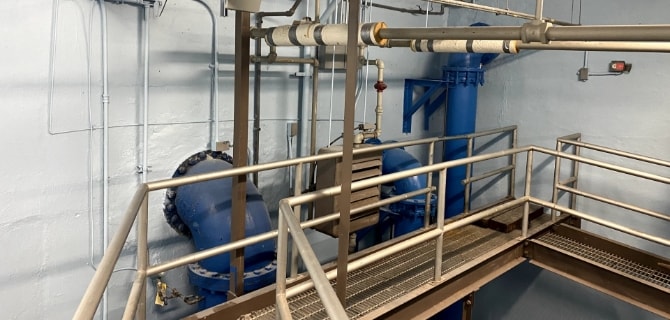
At Painters Inc., we’ve handled many jobs where the surfaces are metal, and we’ve worked all types, from iron to steel, galvanized steel to aluminum. After years offering these services, we’ve got plenty of insights to offer in regard to repainting commercial metal buildings.
Remove rust and old paint
When metal surfaces fail, it’s almost always because of rust. Furthermore, removing old paint is a common prep job that metal surface projects require. While painting over these problems might look bad, it’s also a recipe for disaster, as paint will not adhere for long to these problems and will eventually flake off.
In most cases, the old paint is removed first, which often reveals rust. Most painting contractors know how to handle rust, but when the problem has gone so deep that the metal has holes in it, these problem areas require expert attention. Furthermore, rust is not easy to remove and takes special skills and a fair amount of “elbow grease.”
A wire brush is often the tool to use in getting rid of rust, followed by various grits of sandpaper. Another option is chemicals worked into the rusted areas, but to avoid the use of toxic substances, many painting contractors employ a sandblaster to get at these stubborn areas.
Repair small holes and dents
When the rust has been allowed to work on the metal for a long period of time, holes are created. Quality roofing contractors will look closely at rusted areas as they remove the rust and try to detect holes, which are often remedied with an auto body filler, such as Bondo.
Clean the metal surface
Another crucial step in prep work on metal is cleaning. For example, if old paint has been removed, a pressure washer can be brought in to completely rid the surface of any remaining chips, dust, dirt or any other type of grime. A towel can be used to facilitate faster drying and further removal of dirt.
Sand the metal
When metal is sanded, it rids the surface of any imperfections that might get in the way of proper paint adhesion. It also creates a smooth surface that looks exceptional when paint has been applied. Sanding also creates tiny scratches in the metal, which gives the paint better adhesion. Many painting contractors will use a final fine-grit sandpaper to offer the high-quality smoothness and tiny etches.
Shield the doors and windows
It’s always wise to protect areas of the workspace that are not being painted or prepped for paint. For example, plastic sheeting is often employed on everything from landscaping to doors and windows so they are not damaged or painted.
Apply the right primer
The purpose of primer is to make the topcoat look great, but also provide the added adhesion that will give the paint longevity. Some primers include special ingredients, such as a rust-inhibitive, which adds that extra protection against rust on surfaces that are prone to rust, such as ferrous metal.
Begin painting with a paint sprayer
Painting metal requires even coats, which is what can be achieved with a paint sprayer in the hands of a learned professional. The sprayer allows the painter to cover a large area in a little time, which can reduce labor costs. At Painters Inc., we thoroughly inspect our paint sprayers prior to each use, as they must be operating perfectly to provide consistent and even coverage.
Finish with a sealer
One of the most tried and true ways of preventing fading, rusting and chipping is to apply a sealer over the topcoat. There are many types of sealers on the market today, but at Painters Inc., we only use the sealer meant for paint that has been applied to metal.
Armed with this knowledge, you should be able to have a discussion with your painting contractor and let them know that you expect them so they follow the best practices that top contractors use when they paint metal surfaces. Ask around about Painters Inc. and you’ll find out that we’re knowledgeable about prepping and painting metal.
Choose the right type paint for your metal surfaces
The best paint for metal surfaces depends on the type of metal and where the surface is located, as environmental factors weigh into the decision. In most situations, direct-to-metal (DTM) paint, which is an acrylic paint, has the best adhesion to metal. There are also various multi-purpose paints that are made to match metal quite well.
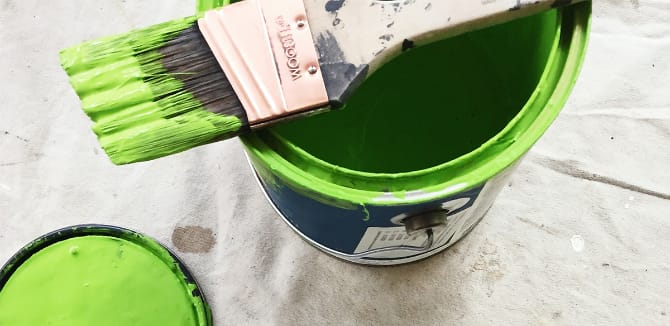
An important note is that it’s always wise to choose a high-quality paint, which might come at a higher cost, but it adds value to the project and in the long run can actually save you money. The best type of paint for metal surfaces often includes ingredients that budget paints don’t use in their recipes. These ingredients offer a variety of perks, from reducing the risk of mildew to stopping fading of the color.
When you bring in a quality contractor to your project, you’ll have access to a wealth of knowledge about which paint for metal surfaces will bring you the greatest durability and longevity.
Oil-based metal paints
Oil-based paints are often associated with exterior projects, as they are the most durable and provide that long life that everyone is looking for. Oil-based paint for metal is not as popular as acrylic paint, but for some outdoor projects, it’s a good option.
One of the drawbacks with oil-based paint for metal is that it dries slowly (around two days, depending on conditions), which means if you’re doing multiple coats, you’re going to have to plan for a prolonged finish to your project. Also, oil-based paints require the use of safety masks, as the fumes can be overwhelming.
While these types of paints can’t be used on galvanized steel because of the chemical reaction created, it’s popular with other types of metals due almost entirely to its reputation for a long lifespan. Also, some projects do not require a primer base, which is a bonus on costs and time.
The best oil-based paint and primer for metal:
Sherwin-Williams Kem Bond HS metal primer
A leader in every category of painting projects, Sherwin-Williams is a trusted brand known to all good painting contractors. Its Kem Bond HS metal primer is a single-component, fast-drying, rust-inhibitive, universal phenolic alkyd metal primer. It features high-solids but low-VOC. This oil-based primer for metal is also free of heavy metals.
Sherwin-Williams Pro Industrial Urethane Alkyd Enamel paints
A single component oil-based paint for metal, Pro Industrial is attractive for projects that require a high gloss finish. And while it’s used extensively in exterior projects, it also has interior uses, particularly in industrial environments. It’s a flexible paint to apply, too, as it can be sprayed, rolled or brushed onto metal surfaces.
Epoxy metal paints
Looking for a wonderful, long-lasting finish? You can get that with epoxy metal paints. As with any paint that is going onto metal, the surface needs to be carefully prepared prior to applying epoxy paint. At Painters Inc., we know to use a wire brush on metal before applying epoxy metal paint because making these tiny etches in the metal promotes adhesion.
Epoxy paints are known for their ability to protect against extreme temperatures, as well as corrosive fluids, which makes it a popular product for industrial buildings. At Painters Inc., we’ve used epoxy metal paints extensively on steels of all kinds, as well as on metals in a variety of industrial situations.
The best epoxy paint and primer for metal:
Sherwin-Williams Macropoxy® 646 Fast Cure epoxy primer finish
Sherwin-Williams makes an outstanding epoxy primer for metal and it’s called the Macropoxy 646. It’s a two-component, high solids primer that is fast to dry and designed for protecting steel in industrial complexes. Part of the reason it offers such high-quality protection is due to its high solids content, which also protects corners, welds and sharp edges.
Sherwin-Williams Acrolon 218 HS paints
Epoxy paint for metal doesn’t get much better than Sherwin-Williams’ Acrolon 218. This two-component paint is modified with polyester, aliphatic and acrylic polyurethane, all of which provide different perks that aid in durability and protection. It’s a fast-drying paint that is preferred in industrial applications. It’s also known for holding its color and for its gloss retention.
Water-based metal paints
Water based metal paints are a perfect match for galvanized steel, as the zinc on this type of metal can create a chemical reaction with other types of paint. Also, because it’s water based, it has fewer volatile organic compounds (VOCs), which makes it usable in enclosed environments.
Another advantage to water based exterior paint for metal is that it is easy to clean. For projects that require a fast turnaround to completion, water-based paint for metal is preferable, as it has a fast dry time, which means there is less waiting between coats.
When you want your paint colors to last a long time, choosing a water-based paint for metal is preferable, as the color holds for a longer amount of time than other types of paint. Most of these paints use a rubber, acrylic or vinyl base, which offers advantages related to adhering to metal and/or primer made or metal surfaces.
The best water-based paint and primer for galvanized metal:
Sherwin-Williams Pro Industrial Pro-Cryl Universal Acrylic primer
A water-based primer for metal that you should know about comes from Sherwin-Williams. Look for the Pro Industrial Pro-Cryl Universal acrylic primer, because it is a rust-inhibitive product that protects your metal surfaces. Its best application is prior to solvent-based or high-performance topcoats.
Sherwin-Williams Sher-Cryl HPA paints
Looking for water-based paint for metal? Choose Sherwin-Williams’ Sher-Cryl HPA, which is a single-component, ambient-cured acrylic coating. The company has included a variety of ingredients that make this a durable product for galvanized metal.
Special metal paints
In areas that you know will be exposed to moisture, more so than other surfaces, you’ll need a paint that has additional protection added to it. Furthermore, special metal paints are also designed to be fire and heat resistant, as well as antimicrobial resistant.
Rust-resistant paints on moisture-prone metal surfaces
It’s not uncommon for contractors to repaint rusted metal, which means they not only have to prep the surface, but they also have to choose a paint that can help resist further rusting or corrosion, particularly on iron alloys.
The best paint for rusty metal surfaces is one that has ingredients that help resist further rusting. A rust proof paint for metal will offer years of protection and provide your surfaces with more longevity than other types of paint.
Fire proof paints for metal surfaces
Fires can happen anywhere, but in areas where sparks, open flames and other heat-generating equipment is present, the surfaces require fire proof paint for metal, which means they have a fire retardant in their list of ingredients. This means that when high temperatures are common, the paint will not break down, swell, blister or crack and peel. Essentially, the paint acts as a fire barrier between the heat source and the underlying structure.
Heat-resistant paints on heat-generating metal surfaces
A heat resistant paint for metal is the product of choice in many industrial facilities. Almost all paints for metal are designed to handle normal heat generation, such as temperatures generated under exposure to the sun, but a heat-resistant paint for metal includes ingredients that offer protection beyond normal temperatures. And while these heat-resistant paints will not fail under high temperatures, they offer the added anti-corrosion protection, which is important on metal surfaces that are prone to exposure to corrosion-causing conditions.
Choose an experienced metal painting contractor in the Chicago area
Metal building painting contractors are a rare breed. They have amassed the knowledge necessary to protect metal surfaces of all types. That’s what you get when you partner with Painters Inc. We’re the professionals who can tackle any and all types of projects involving metal surfaces, from iron alloy to aluminum, copper to galvanized steel.
Our goal is to provide services that make your surfaces look fantastic while also protecting them for years to come. We do this by providing the right kind of prep work so the surfaces are 100 percent ready for primer and topcoat. We bring all the modern tools of the trade, as well as the techniques that only seasoned veterans of the industry have acquired. It’s what makes us the go-to painting contractor for metal surfaces in Chicagoland. Contact us and let’s discuss your project.









